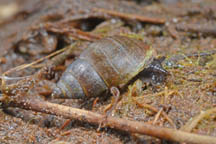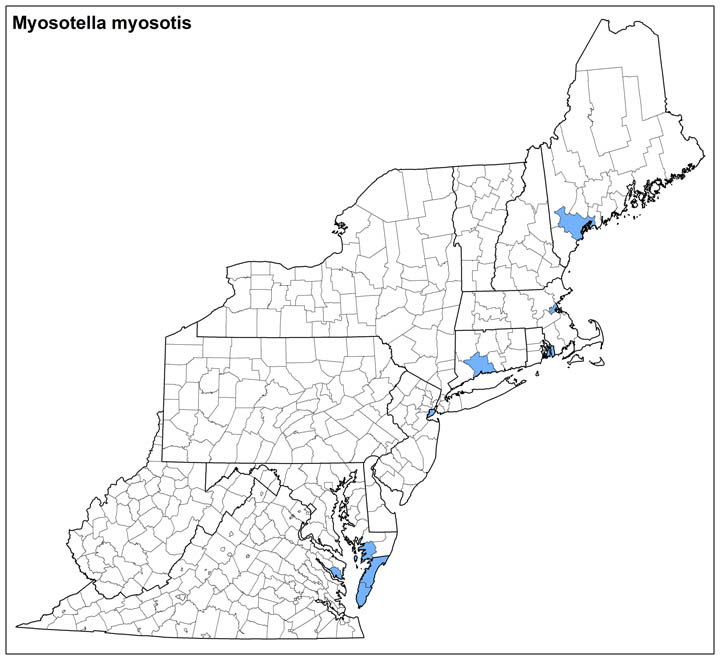Land Snails

Photo: Myosotella myosotis.
Image © Roy Anderson
Click photo to enlarge.
Myosotella myosotis (Draparnaud, 1801) (non-native)
Family: Ellobiidae
Common name: Mouse Ear Snail
Identification
Width: ~3.5 mm
Height: ~7 mm
Whorls: 5+
The small shell of Myosotella myosotis is brown to yellowish or reddish (Fofonoff et al., 2003). The apex of the shell is pointed, the umbilicus closed, and the aperture large and oval. There are two or three transverse parietal lamellae in the aperture, and some varieties may have lamellae on the interior palatal side as well. Younger specimens may have small bristles around the top of the whorls.
Ecology
This amphibious salt marsh snail is introduced from Europe. Introduced populations in the Chesapeake Bay region appear to remain patchy rather than spreading (Fofonoff et al., 2003. In the Pacific Northwest this species did not appear to out-compete native species (Berman and Carlton, 1991).
Taxonomy
There are a great many synonyms for this animal, including Auricularia myosotis, Alexia myosotis, Alexia setifer, Carychium myosotis, Convulvulus myosotis, Melampus myostis, Pythia myosotis, Alexia myostis marylandica, Carychium personatum, Alexia bermudensis, Voluta denticulate, and Ovatella myosotis (in Fofonoff et al., 2003).
Distribution
In Eastern North America there are scattered records for this Eurasian species ranging from Nova Scotia, Canada, south to the West Indies (in Fofonoff et al., 2003), as well as the West Coast and many other shores around the globe.
Conservation
NatureServe Global Rank: GNR, Not yet ranked (but surely secure).
Ken Hotopp 10/2017
Range Map (click to enlarge)



